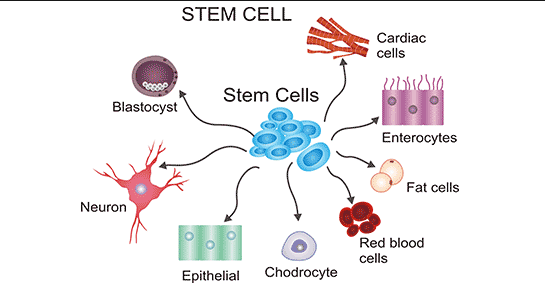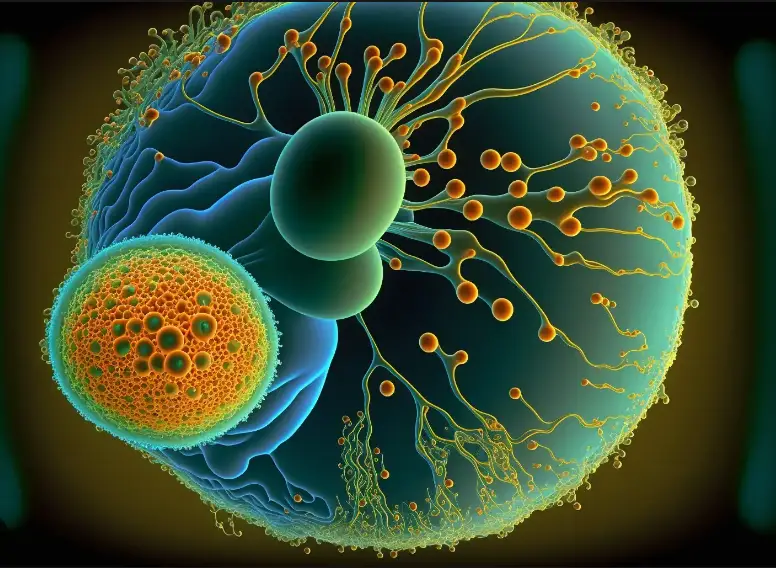Stem cells are undifferentiated cells that have the potential to develop into various different cell types, and can self-renew or differentiate into specialized cells. In this blog, we will discuss the difference between stem cell differentiation and self renewal, and explore the implications of these processes. We will also look at the various methods used to induce stem cell differentiation and self renewal in order to understand the importance of these two processes in stem cell research.
The difference between differentiation and self-renewal

The difference between differentiation and self-renewal is an important one to understand when it comes to stem cells. Differentiation is the process by which stem cells develop into different cell types, such as muscle, nerve, or blood cells. Self-renewal, on the other hand, is the process by which stem cells divide and replicate themselves, maintaining their undifferentiated state.
Self-renewal, on the other hand, is the process by which stem cells divide and replicate themselves, maintaining their undifferentiated state. Differentiation is essential for the development of any organism, while self-renewal allows stem cells to remain viable and continue to be used in regenerative medicine. To put it simply, differentiation is the process of turning stem cells into something new, while self-renewal is the process of keeping stem cells the same.
How does differentiation affect stem cell function

Stem cell differentiation and self-renewal are two processes that are essential for the healthy functioning of stem cells. Differentiation is the process by which stem cells convert into a more specialized cell type, while self-renewal is the process by which a stem cell can renew itself and divide into two identical daughter cells. While both of these processes are necessary for stem cell function, they differ in terms of the outcome they produce.
Differentiation results in the creation of new, specialized cell types, while self-renewal simply creates two identical copies of the original stem cell. As such, differentiation is essential for the growth and development of new tissue, whereas self-renewal is necessary for maintaining a stable population of stem cells.
How does self-renewal affect stem cell function
The difference between stem cell differentiation and self-renewal is a key concept when understanding the function of stem cells. Self-renewal is the ability of a stem cell to divide and produce identical daughter cells, while differentiation is the process of a stem cell becoming a more specialized cell type, such as a muscle or nerve cell.
Self-renewal and differentiation are both important for stem cell function, as self-renewal allows for the production of more stem cells, while differentiation helps to create the specialized cells that make up the body. Self-renewal is essential for maintaining a healthy balance of stem cells to differentiate into the various cell types in the body.
Examples of differentiated and self-renewed stem cells
Stem cells are some of the most fascinating and versatile cells in the body. They have the potential to differentiate into any cell type, and have the ability to self-renew, meaning that they can create more of the same type of cell.
This makes them ideal for regenerative medicine and tissue repair. But what is the difference between stem cell differentiation and self-renewal? Differentiation is when a stem cell becomes a more specialized cell type, such as a nerve cell or a muscle cell.
This process is driven by a combination of genetic and environmental cues, and can be seen as the cell “deciding” what type of cell it wants to become. Self-renewal, on the other hand, is when a stem cell creates another stem cell, essentially making a copy of itself. This allows the stem cell population to remain large and diverse, and it is a key component of tissue repair and regeneration.
This allows the stem cell population to remain large and diverse, and it is a key component of tissue repair and regeneration. Examples of differentiated and self-renewed stem cells can be found in virtually every tissue in the body, from the skin to the brain. Skin stem cells are responsible for creating new skin cells to replace those that are damaged or lost.
In the brain, neural stem cells are responsible for creating new neurons and glial cells. In the gut, intestinal stem cells replace damaged cells and ensure the proper functioning of the digestive system. These examples highlight the importance of stem cells in maintaining the health and integrity of our tissues. Differentiation and self-renewal are key processes in stem cell biology, and understanding them is essential for developing effective regenerative therapies.
Benefits of differentiation and self-renewal in stem cell research
Stem cell research has been at the forefront of medical advancement for many years now. Understanding the differences between stem cell differentiation and self-renewal is key to unlocking the potential of stem cells and the treatments they may offer. Differentiation is the process by which stem cells transform into specialized cell types, while self-renewal is the process by which stem cells are able to divide and generate more stem cells.
Understanding the benefits of each process offers insight into the potential for stem cell treatments. Differentiation allows stem cells to be used to repair or regenerate damaged tissue and organs, while self-renewal allows for the generation of a vast number of stem cells for research purposes.
Understanding the difference between these two processes and how they work together can help to unlock the potential of stem cell treatments and the medical advancements they can provide.
Conclusion
In conclusion, stem cell differentiation and self renewal are two important processes that are crucial for the functioning of stem cells. Differentiation is the process of a stem cell becoming a specialized cell, while self renewal is the process of a stem cell dividing and producing two identical daughter cells.
Differentiation and self renewal are both essential for the maintenance of the stem cell population and the functioning of the body. Differentiated cells are responsible for the specialized functions of the body, while self renewal helps to replenish the stem cell population and maintain tissue homeostasis.

